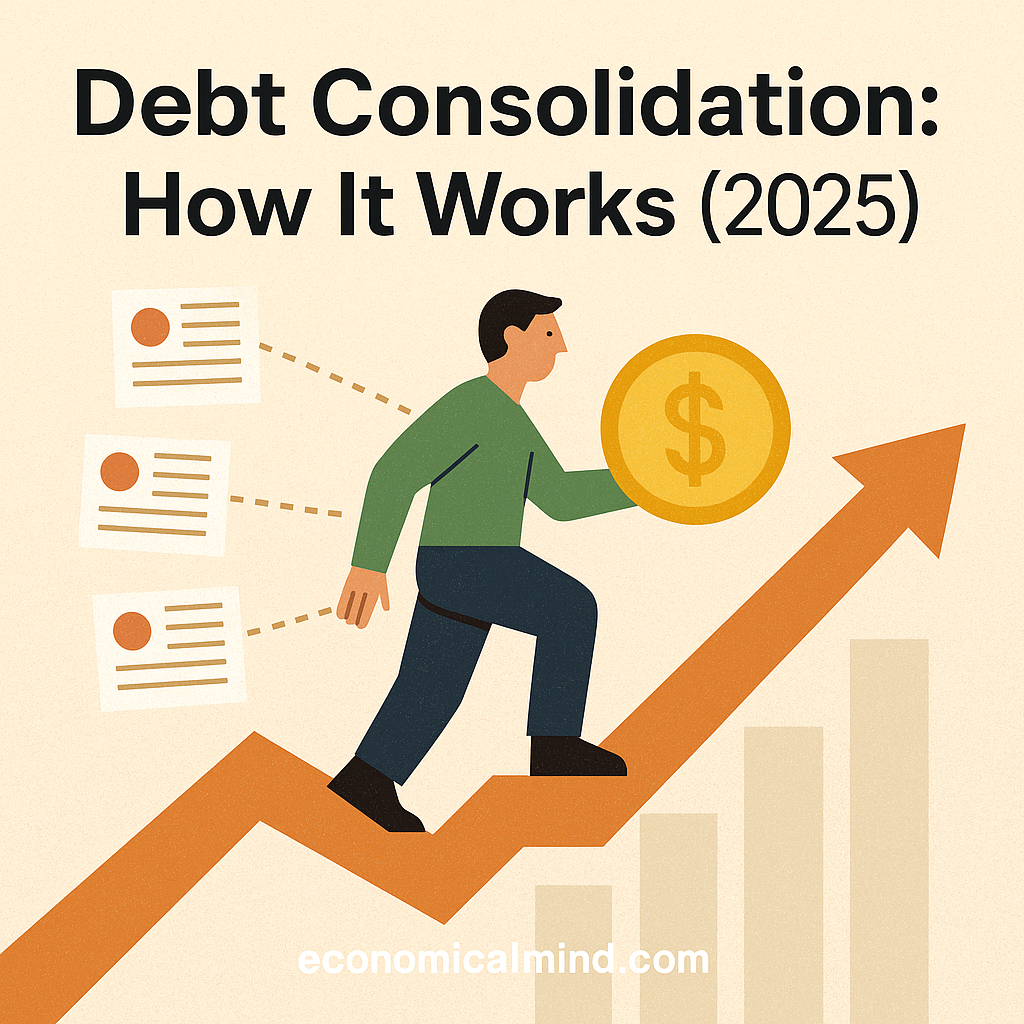
Managing multiple credit cards, loans, and due dates can feel overwhelming. Debt consolidation is one of the most practical ways to simplify your payments and lower your stress. In 2025, rising interest rates and new online lenders have reshaped how consolidation works — making it easier for borrowers to take control of their debt with the right strategy.
What Is Debt Consolidation?
Debt consolidation means combining multiple debts into a single loan or payment plan — ideally at a lower interest rate. Instead of juggling several payments each month, you pay one lender, one bill, and often less interest overall.
You’re not erasing debt; you’re restructuring it to make repayment faster and more manageable.
Common forms include:
- Personal loans for debt consolidation
- Balance transfer credit cards with 0% introductory APR
- Home equity loans or HELOCs (for homeowners)
- Debt management plans through certified credit counselors
How It Works
- Evaluate Your Debts
List all outstanding balances, interest rates, and minimum payments. - Check Your Credit Score
Higher credit often means better consolidation terms. - Choose a Consolidation Method
- Loan: Borrow a new fixed-rate loan to pay off existing accounts.
- Balance Transfer Card: Move multiple card balances to one low-APR card.
- Credit Counseling Plan: Work with an agency to negotiate lower interest and combine payments.
- Pay Off Old Balances
Once your new account is funded, old debts are cleared and replaced with one consolidated payment. - Make On-Time Payments
Consistency is key — missing payments can undo your progress.
Benefits of Debt Consolidation
- Simplifies monthly payments into one bill
- Lowers overall interest rate in many cases
- Boosts credit score over time with consistent on-time payments
- Reduces stress by creating structure and predictability
Potential Drawbacks
- Requires good to excellent credit for the best rates
- May include fees (loan origination, balance transfer, counseling)
- Doesn’t solve underlying spending habits
- Could extend your repayment timeline if mismanaged
Best Options for 2025
In 2025, borrowers have access to more flexible online platforms that make consolidation simpler than ever:
- SoFi, Upgrade, and LightStream offer low-interest personal loans for creditworthy borrowers.
- Discover and Citi continue to lead in 0% balance transfer offers (up to 18 months).
- NFCC-accredited counseling agencies help those with lower credit scores find structured debt management plans.
Before choosing, compare:
- Interest rate (APR)
- Term length
- Fees or penalties
- Monthly payment fit within your budget
When Debt Consolidation Makes Sense
Debt consolidation is ideal if you:
- Have multiple debts with interest rates above 15%
- Maintain steady income for regular payments
- Can qualify for lower rates through good credit or a cosigner
- Want to simplify and pay off debt faster
Avoid consolidation if you’re still adding new debt, lack income stability, or can’t commit to regular payments — it can worsen your situation.
Practical Tips for Success
- Close or pause old credit cards after consolidating to avoid re-accumulating debt.
- Automate payments to never miss a due date.
- Track progress monthly — seeing your balance drop keeps motivation high.
- Build an emergency fund to prevent relying on credit again.
Final Thoughts
Debt consolidation isn’t a magic fix — but it’s a smart, structured way to regain control and focus your repayment strategy. In 2025, with more online tools and competitive rates, managing debt is easier than ever. The key is discipline: stick to your plan, monitor spending, and use consolidation as the bridge to lasting financial freedom.
